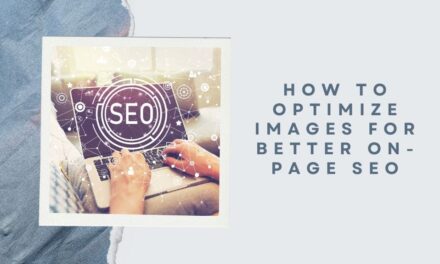SEO is a complex process that aids content in achieving higher rankings in search engine results. Although many individuals concentrate on keywords and meta tags, a significantly overlooked component of SEO is linking; particularly, the application of internal and external links within your content. When executed properly, links can enhance user experience, boost website authority, and generate organic traffic. A strong internal linking approach, along with properly positioned outbound links, can greatly improve your content’s SEO effectiveness. This article explores the objectives and advantages of each type of link, the way link juice distributes among them, and the methods for implementing them in line with SEO best practices.
What Are Internal and External Links?
Before diving into technical strategies, it’s important to understand the basic difference between internal and external links. Both are hyperlinks, but they serve different roles in the SEO ecosystem. Incorporating them smartly into your content helps improve both crawlability and user experience, making your site more valuable in the eyes of search engines.
Internal Links: Connecting Pages Within the Same Website
Internal links point from one page on your website to another. These links help users navigate your site and assist search engine bots in understanding the structure of your content. A solid internal linking strategy allows you to guide visitors toward relevant articles, services, or landing pages, increasing time spent on your site. They also help distribute link juice throughout your site, improving the authority of key pages.
External Links: Sending Users to Other Websites
These hyperlinks, which point from your website to another domain, are also referred to as outbound links. Search engines view your content as reliable and thoroughly researched when you include outbound links to high-authority sources. Outbound linking needs to be done carefully, though, as linking to irrelevant or spammy websites can lower your rankings. Your content’s credibility and contextual relevance can be increased by properly incorporating outbound links into SEO.

The Importance of Internal Linking Strategy
An internal linking strategy is more than just randomly connecting pages. It’s a methodical way of guiding users through your website, enhancing content discovery, and improving overall site architecture. Here’s why a well-planned internal linking structure matters for SEO and user experience.
Helps Search Engines Crawl and Index Your Website
Search engine bots use links to discover new pages and understand how different pages relate to each other. When you link to relevant pages within your own website, it helps bots crawl your content more efficiently. This ensures that even deeper pages, which may not be directly visible in your menu, get discovered and indexed. A clear internal structure makes it easier for Google to understand what your website is about and which pages are most important.
Distributes Link Juice Throughout Your Website
Link juice is the SEO value or authority passed from one page to another through hyperlinks. When high-authority pages on your site link to other pages, they share their ranking power. For example, if your homepage has strong authority and you link to a new blog post from it, that post may rank higher as a result. Your internal linking strategy helps control where this value flows, strengthening your SEO across multiple pages.
How to Create an Effective Internal Linking Structure
It’s not difficult to create an efficient internal linking system, but careful planning is necessary. Making it simple for users and bots to efficiently and logically navigate your content is the aim. A disorganized or inconsistent strategy can confuse search engines and your audience while weakening link juice.
Use Descriptive Anchor Text
Anchor text is the clickable part of a hyperlink. Instead of saying “click here,” use descriptive phrases like “learn how to build backlinks” or “our guide to on-page SEO.” This not only improves user understanding but also signals relevance to search engines. Descriptive anchor text also helps your content align with SEO best practices, making it easier to rank for related keywords.
Link to Related Content Naturally
Only insert internal links where they make sense contextually. Forced links can disrupt readability and frustrate users. Aim to link to related blog posts, FAQs, service pages, or cornerstone content that provides additional value. For example, if you’re discussing keyword research, linking to your content on “SEO content writing” enhances the experience without interrupting the flow.
Keep Key Pages in the Loop
Not every page on your website is equal. Since product pages, foundational blogs, and service summaries are essential to conversions or visibility, they should receive more attention. To direct authority and traffic to these crucial areas, implement your internal linking strategy. Incorporate links to more recent, high-quality content into your older posts on a regular basis to sustain link juice flow over time.
The Role of Outbound Links in SEO
While many site owners fear linking out to other websites, doing so can actually improve SEO when managed correctly. Outbound links SEO techniques focus on improving credibility and adding depth to your content by referencing trustworthy sources. When you cite reputable articles or data, you show both users and search engines that your content is well-supported and up to date.
Builds Topical Authority
Linking to high-authority sources like government sites, research journals, or popular industry blogs helps validate your arguments. This makes your content more reliable in the eyes of search engines. If you’re writing a blog post about “SEO in 2025,” referencing Google Search Central or an industry study will improve its trustworthiness. This alignment with SEO best practices boosts both visibility and engagement.
Provides Additional Value to Readers
Your main goal is to serve the reader. Sometimes, the best way to do that is by linking to external content that expands on a topic you briefly mention. For instance, if you mention an algorithm update, linking to Google’s official announcement offers valuable context. Just ensure that your outbound links SEO choices don’t point to competitors or unreliable sources.
Best Practices for Linking in SEO Content
Some SEO best practices are universal, regardless of whether you’re linking internally or externally. By putting these tactics into practice, you can make sure that your links enhance rather than hinder your content’s performance. Even minor adjustments to your linking strategy over time can add up to big SEO benefits.
Avoid Overstuffing Links
Too many links; especially in a single paragraph; can make your content feel spammy and hard to read. Limit yourself to a few strategic internal and external links per page. Every link should add real value, not just exist for SEO purposes. When links are used meaningfully, they improve user trust and search engine relevance.
Monitor Broken Links
Broken links can harm user experience and SEO. Use tools like Google Search Console or SEO plugins to regularly audit your site and fix outdated or non-functional links. This keeps your internal linking strategy and outbound links SEO practices aligned with quality standards.
Use a Logical Hierarchy
Make sure your content is arranged in a clear hierarchy with links to key pages. For instance, blog entries ought to link back to relevant service pages or pillar content, and category pages ought to link to specific product pages. This well-organized link juice flow supports the upkeep of a robust internal ecosystem on your website.
How Link Juice Affects SEO Performance
You’ve heard the term “link juice,” but what does it actually mean for your rankings? It refers to the SEO value that one page passes to another through hyperlinks. This concept applies to both internal and external links. By controlling how link juice flows through your site, you can influence which pages Google views as authoritative and relevant.
High-Authority Pages Share Value
If a page on your site earns backlinks from reputable sources, it gains authority. When you link from that page to other pages on your site, the link juice flows and boosts those pages’ SEO potential. This is why it’s important to build backlinks not just to your homepage, but to high-value internal pages as well. An organized internal linking strategy ensures that authority doesn’t stay isolated but supports the whole site.
Outbound Linking Doesn’t “Leak” Value If Done Right
Some believe that external links “leak” link juice and weaken SEO. While it’s true that linking out passes some authority, it’s not inherently bad. In fact, linking to authoritative sources can improve your content’s credibility, which search engines reward. The key is to balance outbound links with strong internal connections to keep your link juice flowing in the right direction.

Using Tools to Improve Linking Strategy
It can be challenging to manually maintain a clear, functional link structure if you’re publishing frequently or managing a large website. Fortunately, there are a number of SEO tools available. In order to apply SEO best practices at scale, automation and analytics are crucial.
Link Tracking and Audit Tools
Tools like Ahrefs, SEMrush, and Screaming Frog let you analyze your internal and external link profiles. They can identify broken links, orphan pages (pages with no internal links), and opportunities to improve purchase history tracking within your content. These audits should be done regularly to maintain optimal internal linking strategy.
Plugins and CMS Features
If you’re using WordPress, plugins like Yoast SEO or Rank Math can suggest internal links as you write. These tools also provide readability and linking scores that help you align with SEO guidelines in real time. Just remember, tools assist; but the strategy must be human-led and aligned with your audience’s journey.
Conclusion
Links are more than just clickable text; they form the foundation of SEO architecture and act as the connections that join content throughout the web. An effective internal linking strategy guarantees that both users and search engines can easily navigate your website. SEO for strategic outbound links fosters trust and shows authority, particularly when linking to credible sources. Understanding how link juice flows throughout your site enables you to direct SEO benefit to the areas that count most. By adhering to SEO best practices, you will create a content ecosystem that excels in rankings and provides an outstanding user experience.
In the ever-evolving world of content writing, mastering the art of linking is no longer optional; it’s essential. Whether you’re optimizing blog posts, service pages, or ecommerce platforms, smart linking could be the silent force driving your SEO success.












